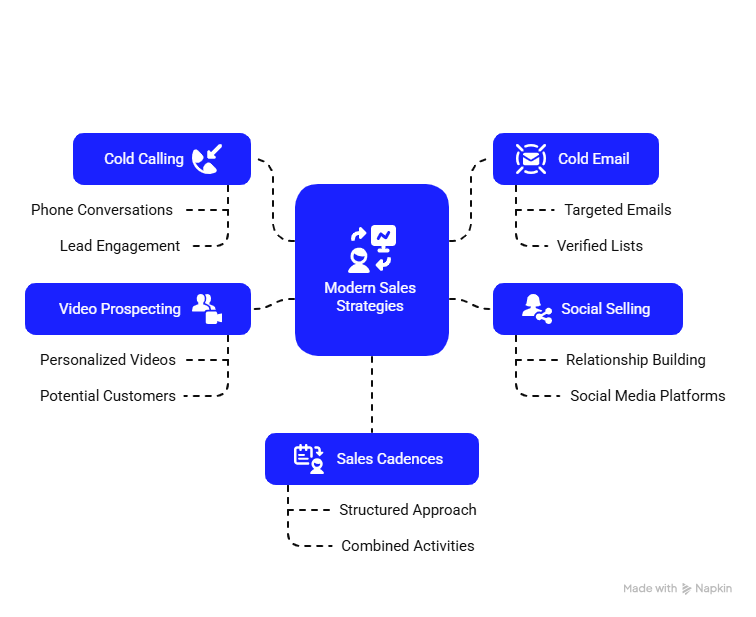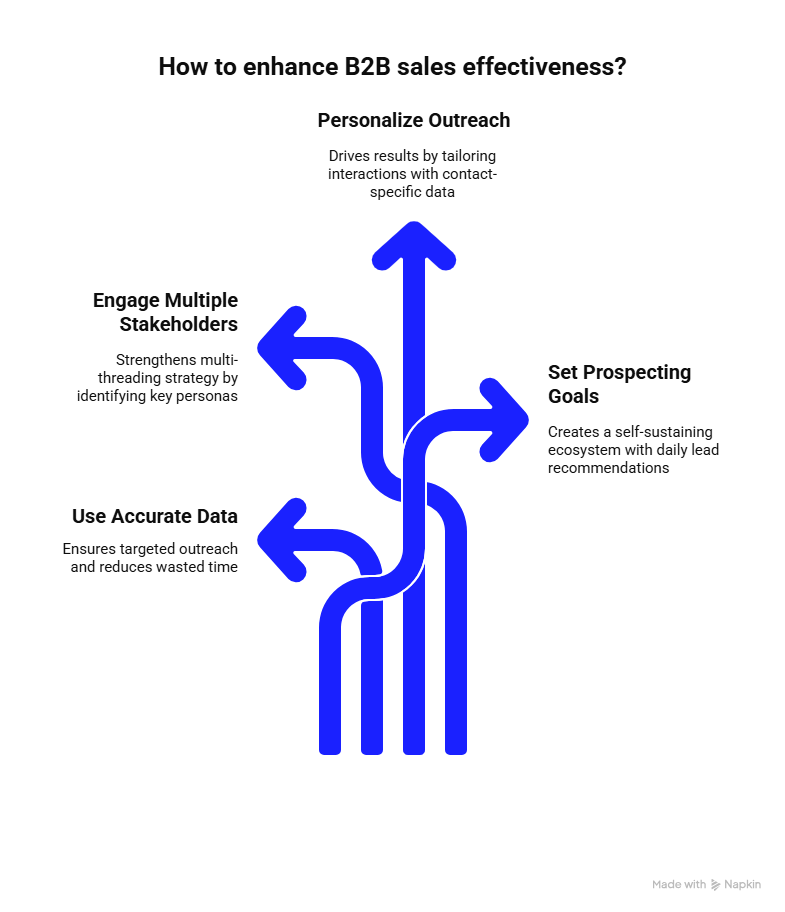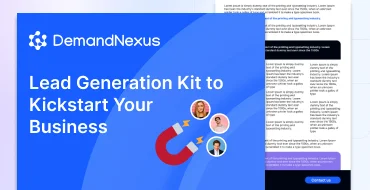In today’s dynamic business landscape, mastering B2B sales is the key to unlocking sustainable growth. Business-to-Business (B2B) sales involve transactions where one company provides products, services, or solutions to another, often requiring tailored strategies to navigate complex buyer journeys. With technology reshaping markets, successful B2B sales hinge on precision, personalization, and data-driven insights. This guide dives into the essentials of B2B sales, offering actionable strategies, real-world examples, and optimization techniques to elevate your sales process.
Why B2B Sales Matter
B2B sales are the backbone of industries, fostering partnerships that drive innovation and scalability. Unlike B2C sales, which target individual consumers, B2B transactions involve higher stakes, larger budgets, and multiple decision-makers. By 2027, U.S. B2B e-commerce sales are projected to reach $3.1 billion, nearly double the $1.7 billion expected for B2C. To thrive, businesses must refine their B2B sales team structure and adopt strategies that resonate with sophisticated buyers.
Understanding the B2B Sales Cycle
The B2B sales cycle is a structured process that guides prospects from initial awareness to long-term partnerships. Unlike B2C, where purchases are often impulsive, B2B sales cycles are longer and involve multiple touchpoints. Here’s a breakdown of the key stages:
- Lead Generation: Identify potential customers through targeted campaigns, sales prospecting techniques, and tools like intent data.
- Lead Qualification: Filter leads based on budget, authority, and need to focus on high-potential prospects.
- Prospect Engagement: Build trust through personalized outreach and value-driven conversations.
- Product/Service Demo: Showcase solutions tailored to the prospect’s pain points.
- Deal Closing: Negotiate terms and finalize agreements with transparency.
- Customer Support: Provide post-sale support to nurture long-term relationships.
Optimizing this cycle requires a deep understanding of buyer behavior and strategic use of technology. Let’s explore real-world examples that highlight effective B2B sales strategies.
Some Examples of B2B sales

B2B Sales Examples in Action
To illustrate how businesses excel in B2B sales, here are three practical examples showcasing innovative approaches:
Example 1: Harnessing Intent Data
A SaaS company used intent data to identify businesses researching cloud-based solutions. By analyzing search patterns, the sales team crafted personalized pitches addressing specific pain points, such as scalability. This targeted approach increased their conversion rate by 15%, proving the power of intent-based marketing.
Example 2: Account-Based Marketing (ABM) Triumph
A healthcare tech firm adopted ABM to target key accounts in the medical sector. By delivering customized content and campaigns, they boosted engagement by 25% and closed 30% more deals within six months. ABM’s focus on high-value accounts makes it a cornerstone of modern B2B sales strategies.
Example 3: Predictive Analytics for Efficiency
A manufacturing company leveraged predictive analytics to prioritize leads with the highest conversion potential. By focusing resources on these prospects, they streamlined their B2B sales cycle, achieving a 20% uplift in sales efficiency.
Top Strategies for B2B Sales Success
To stay competitive, businesses must adopt strategies that align with modern buyer expectations. Here are five proven approaches to optimize your B2B sales process:
1. Leverage Data-Driven Insights
Data is the foundation of effective B2B sales. Tools like intent data and CRM platforms help identify prospects actively seeking solutions. For example, B2B lead generation strategies powered by data can increase outreach precision by 20%.
2. Embrace Account-Based Marketing
ABM tailors campaigns to specific accounts, fostering deeper engagement. By aligning sales and marketing efforts, businesses can create personalized experiences that resonate with decision-makers, as seen in the healthcare tech example above.
3. Utilize Predictive Analytics
Predictive analytics forecasts buyer behavior, enabling teams to allocate resources efficiently. This approach not only shortens the sales cycle but also enhances customer experiences by anticipating needs.
4. Invest in Content Syndication
Sharing valuable content across platforms expands reach and builds authority. Content syndication generates qualified leads by positioning your brand as a trusted resource, a tactic explored in lead generation basics.
5. Enhance Lead Enrichment
Enriching lead data with firmographic and behavioral insights improves segmentation. This ensures sales teams engage prospects at the right time with the right message, boosting conversion rates.
Mini Case Study: Automation Boosts Efficiency
A logistics firm faced challenges with manual lead tracking, leading to missed opportunities. By implementing CRM automation and predictive analytics, they streamlined their B2B sales workflow. Sales reps saved 10 hours weekly, focusing on relationship-building instead of administrative tasks. Follow-up efficiency improved by 20%, resulting in three major contracts within three months. This case underscores how automation and enriched data transform B2B sales outcomes.
Stat Spotlight: The Power of Personalization
Personalization is a game-changer in B2B sales. Research shows that tailored outreach increases conversion rates by 20%, and 78% of buyers expect customized experiences. Tools like ABM and intent data enable scalable personalization, allowing businesses to address specific pain points, such as operational inefficiencies, and turn cold leads into warm prospects.
Overcoming B2B Sales Challenges
B2B sales come with unique hurdles, but strategic approaches can turn challenges into opportunities. Here are three common obstacles and how to address them:
1. Navigating Complex Buyer Journeys
B2B buyers often follow intricate paths, requiring multiple approvals. Mapping the buyer journey—Awareness, Consideration, Decision, Retention—helps teams deliver timely, relevant outreach. Analytics tools track behavior across these stages, ensuring alignment with buyer needs.
2. Building Lasting Relationships
Strong relationships are the heart of B2B success. Consistent value delivery and B2B appointment setting foster trust, ensuring long-term loyalty.
3. Managing Resource Constraints
Limited resources can hinder sales efforts. Prioritizing high-potential leads and automating repetitive tasks maximize efficiency, allowing teams to focus on high-impact activities.
Visualizing the B2B Buyer Journey
A clear understanding of the B2B buyer journey enhances sales strategies. Picture a four-stage process: Awareness (identifying needs), Consideration (evaluating options), Decision (finalizing purchase), and Retention (building loyalty). Each stage requires tailored engagement, from educational content to personalized demos. Analytics tools provide insights into prospect behavior, ensuring your team delivers the right message at the right time.

Conclusion: Elevate Your B2B Sales Strategy
In a competitive market, mastering B2B sales requires blending data-driven strategies, personalized engagement, and cutting-edge technology. By adopting the strategies and examples outlined—such as leveraging intent data, embracing ABM, and optimizing the sales process—businesses can build stronger relationships, shorten sales cycles, and drive sustainable growth.
Ready to transform your B2B sales? Explore DemandNexus for tailored solutions, from intent data to automation, designed to empower your sales team and fuel business success.
FAQs
What are the benefits of B2B sales?
B2B sales enable long-term partnerships, access to larger markets, and opportunities for strategic growth.
How does intent data improve B2B sales?
Intent data reveals prospects actively researching solutions, allowing for targeted outreach and higher conversions.
What is Account-Based Marketing (ABM)?
ABM delivers personalized campaigns to high-value accounts, improving engagement and sales outcomes.
Why use predictive analytics in B2B sales?
Predictive analytics anticipates buyer B2B sales process optimizes resources by predicting buyer behavior.
How does content syndication support B2B sales?
Content syndication expands reach, generates leads, and establishes brand authority.
By implementing these strategies, your business can navigate the complexities of B2B sales and achieve lasting success.



